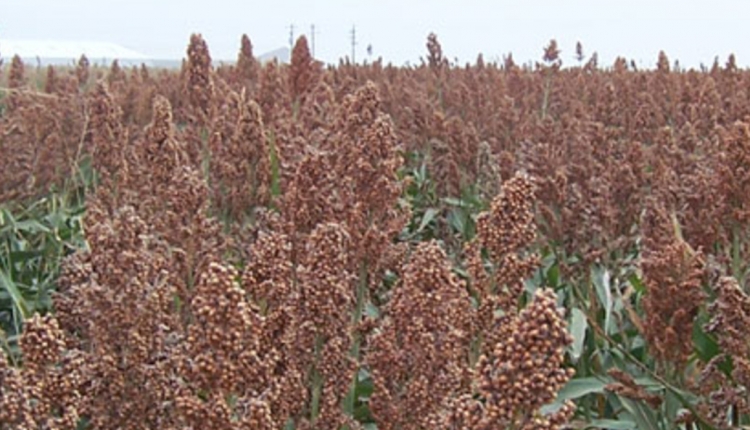|
This item has been supplied by a forage marketer and has not been edited, verified or endorsed by Hay & Forage Grower. The use of summer annuals is nothing new to most U.S. producers. In fact, these products have been used with great success in forage production and as cover crops for decades. Moreover, sorghums continue to gain attention from a variety of places including rising overseas demand, increasing interest among consumers for gluten-free ingredients, and changes in weather patterns encouraging the use of more water-friendly crops. The sorghum industry has long argued the benefits of integrating warm season crops into traditional forage rotations and silage systems. We would suggest that even 10% summer annuals mixed with other cool season forages makes agronomic sense and can help mitigate risk from adverse weather. Below are the “Significant Six” tips to help your forage sorghum crop get off to the right start: - Delay Seeding Until Soil Temps Reach 65° F (at 2” depth).Or, 60° F at the very lowest. Planting too early can lead to stand problems, as sorghums aren’t as tolerant to cool soil conditions or heavy residue. Sorghum's smaller seed size and high temperature requirements often lead to slower seed emergence and lower seedling vigor compared to corn. However, forage sorghums really take off in the summer when temperatures rise and moisture conditions are lower. Success rates with earlier plantings can be enhanced with fungicide treatment to allow for greater likelihood of success.
- Set Drills & Planters to Place Seed .75-1.25" Deep. Forage sorghum can be planted with the same equipment as corn (using a milo/sorghum plate or drum depending on the planter model; some have also had success with sugar beet precision plates). Planting in rows allows for easier harvest and cultivation, if used for weed control. For no-till planters, confirm the unit has adequate down pressure to place seed at the proper depth.
- Shoot for Seeding Rates of 5-12 Lbs./Acre. This equals 80,000-140,000 plants/acre. Rates vary based on row width, hybrid selection and availability of rainfall/irrigation. Use lower rates in dry areas and higher rates in humid or irrigated environments. Increase seeding rates as row width narrows. Use of 15" rows may help standability since stems tend to get thicker when plant-to-plant competition is reduced. Normally, higher seeding rates produce finer stems – which are more desirable for pasture and hay production. Note: BMR hybrids may tolerate lower seeding rates as quality is less dependent on finer stems.
- Proper Fertility is Crucial for Growing Forage Sorghum. Across most of the Midwest, phosphorus (P) and potassium (K) levels needed for forage sorghum should compare to that of corn silage. Nitrogen (N) is different however. Our team suggests thinking about forage sorghum N needs this way- for every day the sorghum plant is growing, assume it needs between 1.0-1.25 lbs. of actual N. Fertilize according to yield goals, making sure residual N in the soil is also accounted for.
Take caution when adding N as some starter fertilizers can cause injury in narrow row environments, and side-dressing N into sorghum can cause root pruning. It’s important to maintain an N to Sulfur (S) ratio close to 5:1. This helps the plant more efficiently convert N to protein (and thus keep toxic nitrate concentrations at bay within the plant). Nitrates can be an issue, just as they are in corn silage. Ensiling reduces nitrate content, however this takes time. A simple recommendation is to leave more stalk at harvest, because nitrates accumulate in the lower part of the plant.
- Herbicides for Forage Sorghum are Limited- Basically 2,4-D, atrazine, metalochlor, and bromoxynil are labeled for sorghum applications. To apply metalochlor, sorghum seed should be treated with a seed safener. With the uptick in sorghum use, safened seed availability is very common, and is becoming the norm versus untreated seed. Metalochlor, along with atrazine, is a highly effective preemergence herbicide system as forage sorghum can tolerate moderate levels of atrazine. 2,4-D can be used early post for limited broadleaf control. There are unfortunately no postemergence grass herbicides labeled for forage sorghum.
Keep in mind, cultivation is an effective option when sorghum is planted in rows. However, the best weed control strategy is often starting with a clean seed bed and doing everything possible to quickly establish the stand, shading the soil and out-competing weeds for sunlight and water.
- Select the Hybrid to Match Your Goals and Environment. Brown midrib (BMR) hybrids contain less lignin (in both leaves and stalks) and thus have higher digestibility. BMRs can work well for calves or any animals needing more energy, assuming it’s harvested and managed properly. Some hybrids offer male sterility, possessing higher levels of sugar and protein due to lack of grain development.
Overall, forage sorghum works for many classes of livestock, like heifers and dry cows too. These animals have lower energy requirements than lactating animals. Along with supplements, forage sorghum can provide an almost-complete ration in most feeding systems.
|

